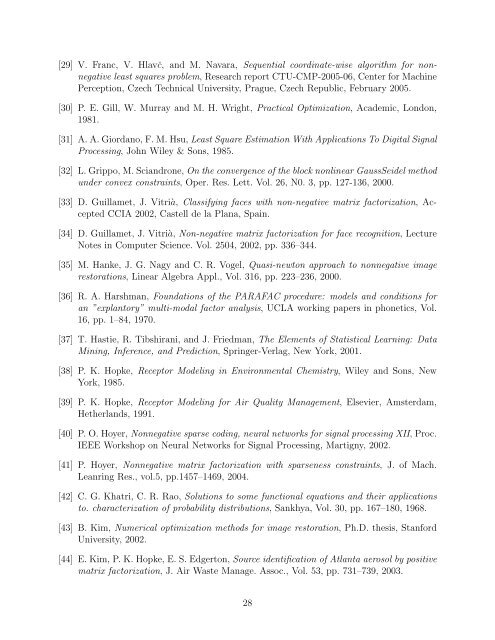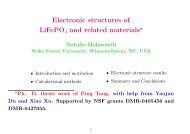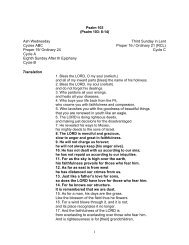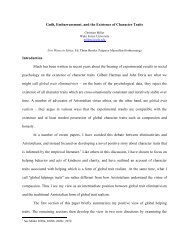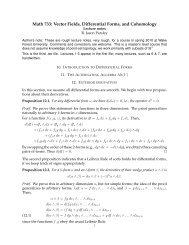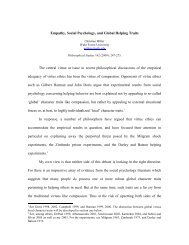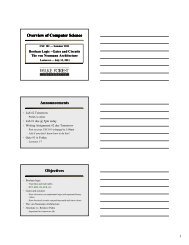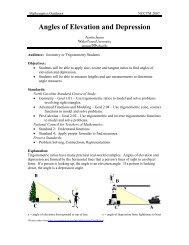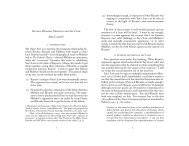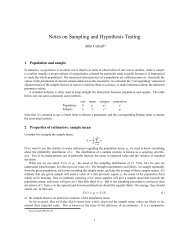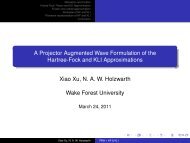Nonnegativity Constraints in Numerical Analysis - CiteSeer
Nonnegativity Constraints in Numerical Analysis - CiteSeer
Nonnegativity Constraints in Numerical Analysis - CiteSeer
Create successful ePaper yourself
Turn your PDF publications into a flip-book with our unique Google optimized e-Paper software.
[29] V. Franc, V. Hlavč, and M. Navara, Sequential coord<strong>in</strong>ate-wise algorithm for nonnegativeleast squares problem, Research report CTU-CMP-2005-06, Center for Mach<strong>in</strong>ePerception, Czech Technical University, Prague, Czech Republic, February 2005.[30] P. E. Gill, W. Murray and M. H. Wright, Practical Optimization, Academic, London,1981.[31] A. A. Giordano, F. M. Hsu, Least Square Estimation With Applications To Digital SignalProcess<strong>in</strong>g, John Wiley & Sons, 1985.[32] L. Grippo, M. Sciandrone, On the convergence of the block nonl<strong>in</strong>ear GaussSeidel methodunder convex constra<strong>in</strong>ts, Oper. Res. Lett. Vol. 26, N0. 3, pp. 127-136, 2000.[33] D. Guillamet, J. Vitrià, Classify<strong>in</strong>g faces with non-negative matrix factorization, AcceptedCCIA 2002, Castell de la Plana, Spa<strong>in</strong>.[34] D. Guillamet, J. Vitrià, Non-negative matrix factorization for face recognition, LectureNotes <strong>in</strong> Computer Science. Vol. 2504, 2002, pp. 336–344.[35] M. Hanke, J. G. Nagy and C. R. Vogel, Quasi-newton approach to nonnegative imagerestorations, L<strong>in</strong>ear Algebra Appl., Vol. 316, pp. 223–236, 2000.[36] R. A. Harshman, Foundations of the PARAFAC procedure: models and conditions foran ”explantory” multi-modal factor analysis, UCLA work<strong>in</strong>g papers <strong>in</strong> phonetics, Vol.16, pp. 1–84, 1970.[37] T. Hastie, R. Tibshirani, and J. Friedman, The Elements of Statistical Learn<strong>in</strong>g: DataM<strong>in</strong><strong>in</strong>g, Inference, and Prediction, Spr<strong>in</strong>ger-Verlag, New York, 2001.[38] P. K. Hopke, Receptor Model<strong>in</strong>g <strong>in</strong> Environmental Chemistry, Wiley and Sons, NewYork, 1985.[39] P. K. Hopke, Receptor Model<strong>in</strong>g for Air Quality Management, Elsevier, Amsterdam,Hetherlands, 1991.[40] P. O. Hoyer, Nonnegative sparse cod<strong>in</strong>g, neural networks for signal process<strong>in</strong>g XII, Proc.IEEE Workshop on Neural Networks for Signal Process<strong>in</strong>g, Martigny, 2002.[41] P. Hoyer, Nonnegative matrix factorization with sparseness constra<strong>in</strong>ts, J. of Mach.Leanr<strong>in</strong>g Res., vol.5, pp.1457–1469, 2004.[42] C. G. Khatri, C. R. Rao, Solutions to some functional equations and their applicationsto. characterization of probability distributions, Sankhya, Vol. 30, pp. 167–180, 1968.[43] B. Kim, <strong>Numerical</strong> optimization methods for image restoration, Ph.D. thesis, StanfordUniversity, 2002.[44] E. Kim, P. K. Hopke, E. S. Edgerton, Source identification of Atlanta aerosol by positivematrix factorization, J. Air Waste Manage. Assoc., Vol. 53, pp. 731–739, 2003.28


